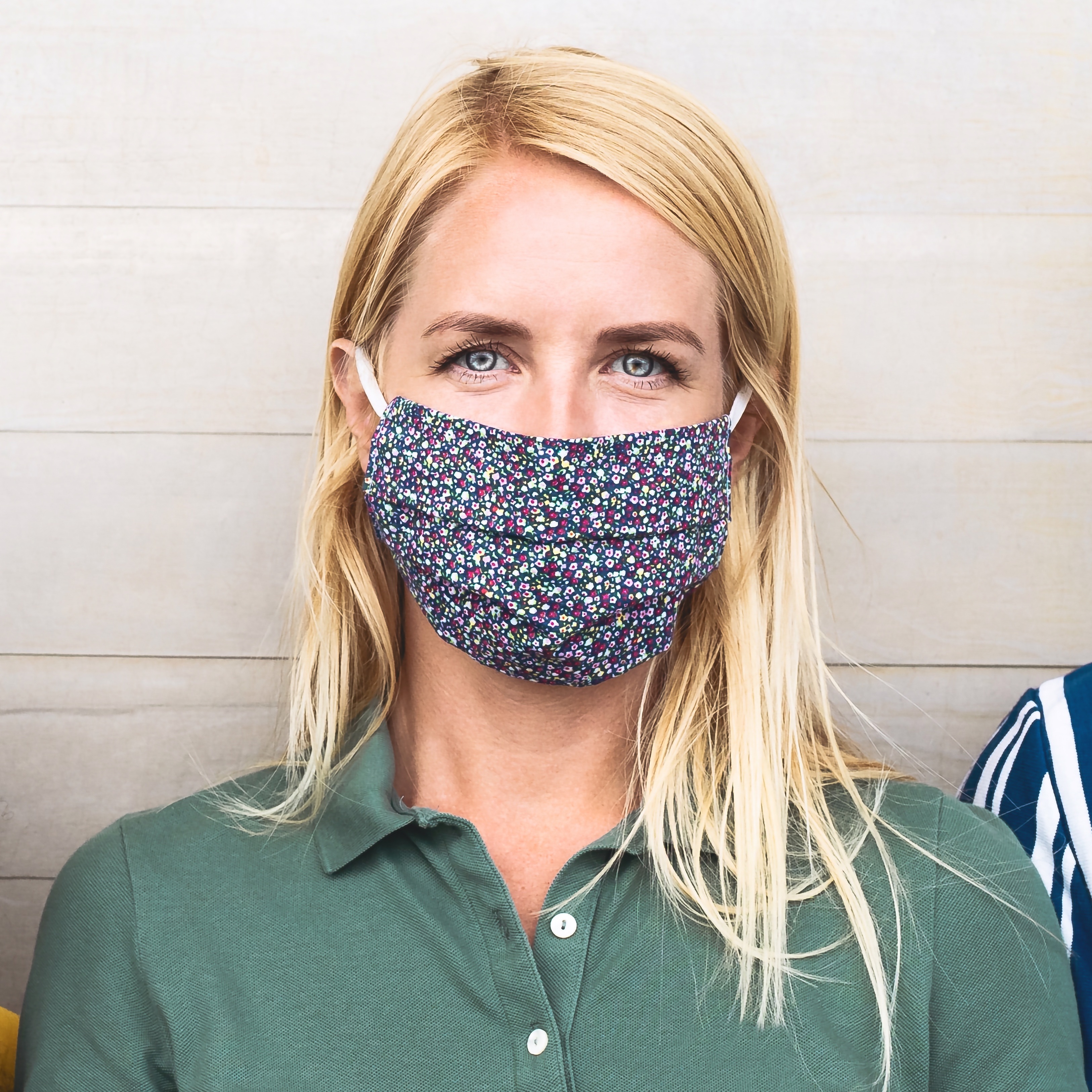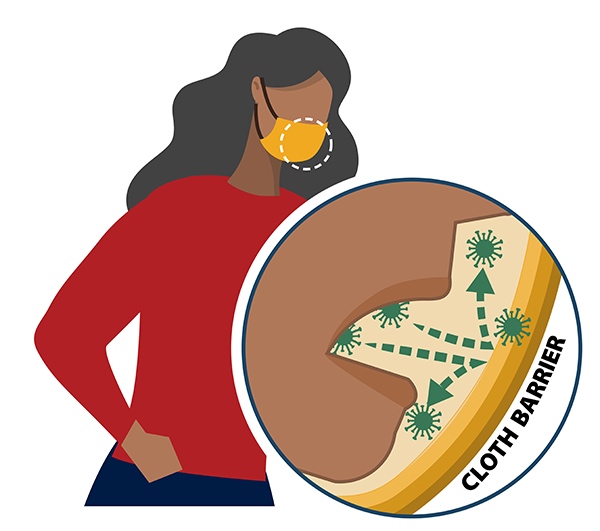- Protect Yourself and Save Others
- info@wearamask.org



CDC recommends that you wear masks in public settings when around people who don’t live in your household, especially when other social distancing measures are difficult to maintain.
Masks are most likely to reduce the spread of COVID-19 when they are widely used by people in public settings.
Simple masks can be made at home and may help prevent the spread of COVID-19.
Source: CDC.
A cloth face mask is a mask made of common textiles, usually cotton, worn over the mouth and nose.
When more effective masks are not available, and when physical distancing is impossible, cloth face masks are
recommended by public health agencies for disease "source control" in epidemic situations to protect others from
virus laden droplets in infected mask wearers' breath, coughs, and sneezes.
Who Should Not Wear a Mask
Masks should NOT be worn by:
Children younger than 2 years old.
Anyone who has trouble breathing.
Anyone who is unconscious, incapacitated, or otherwise unable to remove the mask without assistance.
Make sure your mask:
1 fits snugly but comfortably against the side of the face.
2 completely covers the nose and mouth.
3 is secured with ties or ear loops.
4 includes multiple layers of fabric.
5 allows for breathing without restriction.
6 an be laundered and machine dried without damage or change to shape.
For more information visit the CDC website page on How to Wear Masks.

Masks are recommended as a simple barrier to help prevent respiratory droplets
from traveling into the air and onto other people when the person wearing the mask coughs,
sneezes, talks, or raises their voice. This is called source control. This recommendation
is based on what we know about the role respiratory droplets play in the spread of the
virus that causes COVID-19, paired with emerging evidence from clinical and laboratory
studies that shows masks reduce the spray of droplets when worn over the nose and mouth.
COVID-19 spreads mainly among people who are in close contact with one another
(within about 6 feet), so the use of masks is particularly important in settings where
people are close to each other or where social distancing is difficult to maintain.
Source: CDC
"At the beginning of the pandemic, the research community was unsure if the type of material used in a cloth mask mattered. And if so, is there an ideal material? To better understand these questions, we investigated 32 different fabrics made from 100% cotton, synthetics, and blends for both breathability and particle capture efficiency. On average, 100% cotton fabrics performed better than the synthetic or blends with the best cotton materials having some raised fibers, or nap. A simple way to test for nap is to feel it between your thumb and index finger, and if it feels fuzzy, like a baby's blanket, that is a good sign. Synthetic materials, such as polyester, didn't perform as well on average; 4 of the 5 worst performers were synthetic materials. This study* also showed that it is possible to construct a multi-layered cloth mask that has the same or better particle capture than a surgical mask; for example, a 3-layer 100% cotton flannel mask. Using this information may guide people as they construct their own face coverings."
(July 8, 2020) Chris Zangmeister, PhD, Research Scientist, National Institute of Standards and Technology (NIST)
Masks may be more effective as a “source control” because they can prevent larger expelled droplets from evaporating into smaller droplets that can travel farther.
(June 26, 2020) The University of California-San Francisco
If you are a mask manufacturer and want your face mask to be considered for publication on our website, please send a sample supply for review along with a press release. We'll then donate your masks to local organizations including medical personnel and front line workers. Only quality masks will be considered for review and highlighted on our website.